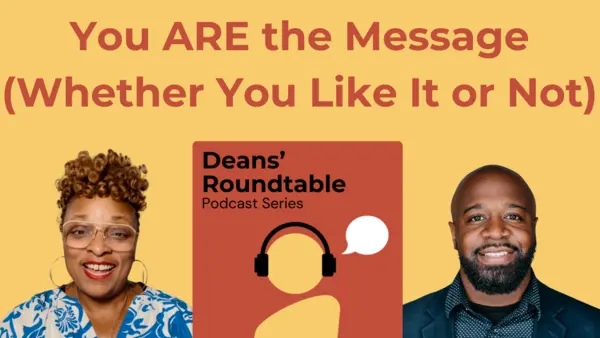Building Psychological Safety: What a Hostage Negotiator Taught Me About Workplace Conversations
In a recent conversation I had with Ryan Dunlap, an internationally recognized conflict management coach and former hostage negotiator, we explored the critical elements of psychological safety in workplace conversations. What struck me most was how the high-stakes world of crisis negotiation offers profound insights for everyday leadership challenges.
Ryan’s unique background—spanning law enforcement, ministry, and executive leadership—has given him an extraordinary perspective on human behavior under pressure. As someone who has navigated countless difficult conversations in educational settings, I found his approach both refreshing and immediately applicable.

The Three Questions Everyone Is Asking
One of the most powerful frameworks Ryan shared centers on three unconscious questions people ask when meeting someone new:
- Can I trust them?
- Are they credible?
- Am I safe in their care?
These questions operate in the background of every interaction, particularly during tense moments. Understanding this dynamic completely shifts how we approach psychological safety in workplace conversations. Instead of focusing solely on our message, we must first demonstrate trustworthiness, competence, and genuine care for the other person’s wellbeing.
Beyond Facts: Addressing the Emotional Layer
“Facts will not resolve feelings,” Ryan emphasized during our discussion. This insight hit home for me, especially reflecting on my early days as a dean of students when I would launch into explanations and policies without first acknowledging the emotional state of upset parents or frustrated colleagues.
The key is validation before information. When someone arrives emotionally charged, they cannot process rational arguments until their feelings are acknowledged. Ryan suggests starting with statements like:
“I have to imagine you are not happy about being here. You missed time from work, and this is the third time this month you’ve had to come down here. I know if I was in your position, I’d be really upset.”
This approach creates space for the emotion while demonstrating empathy—two essential components of psychological safety.
The Power of Future-Focused Conversations
Another transformative concept Ryan shared was redirecting conversations from past grievances to future solutions. Instead of getting trapped in “here’s what they did, here’s what they said,” he advocates asking:
“What does better look like?”
This simple shift moves people from their limbic brain (emotional response) to their prefrontal cortex (rational thinking). It’s remarkable how this question can defuse tension and create collaborative problem-solving opportunities.
Being Right vs. Being Effective
Ryan’s insight about being “right and wrong at the same time” resonated deeply with my experience in educational leadership. You can have the correct information and sound reasoning but deliver it in a way that damages relationships and undermines your goals.
He uses what he calls the “FedEx model”—imagine ordering something you need that arrives at the right place and time, but the delivery driver throws it out the window instead of placing it carefully on your porch. The package arrived, but it’s no longer intact.
The same principle applies to our communication. We must consider not just what we’re saying, but how our delivery affects the recipient’s ability to receive and act on our message.
Creating Space for Course Correction
Perhaps most importantly, Ryan reminded me that conversations aren’t permanent. When we realize we’ve “thrown the package,” we can pause and pivot. His STOP framework—giving yourself Space, Time, and Opportunity to regroup—provides a practical tool for managing heated moments.
Pride and ego often prevent us from acknowledging when our approach isn’t working. But true leadership requires the wisdom to step back and say, “This isn’t working. Let’s try a different approach.”
The Thermostat, Not the Thermometer
Ryan’s analogy of being a thermostat rather than a thermometer perfectly captures the essence of creating psychological safety in workplace conversations. Instead of simply reflecting the emotional temperature of the room, we can actively work to change it.
This means walking into cold situations with warmth and bringing calm energy to overheated environments. It requires developing the emotional intelligence to manage our internal state so we can positively influence external dynamics.
Building Trust Without Existing Relationships
One practical challenge we discussed was creating connection with people you’ve never met—parents calling about disciplinary issues, new team members, or stakeholders with concerns. Ryan’s advice is simple but profound:
“You don’t have to be friends to navigate problems with people. You just have to be friendly. You don’t have to like the people you’re navigating problems with, you just have to know how to be likable.”
This involves giving people space to be heard, demonstrating curiosity about their perspective, and embodying characteristics of trustworthy, competent, and caring individuals.
Moving from Tolerance to Acceptance
In our increasingly polarized world, Ryan advocates for moving beyond mere tolerance to genuine acceptance. His listening progression model shows that agreement isn’t necessary for productive relationships—acceptance is sufficient.
We can accept someone’s perspective or experience without agreeing with their conclusions. This distinction allows for meaningful collaboration across ideological differences, which is essential for creating psychologically safe environments where diverse viewpoints can coexist.
Practical Implementation
The conversation reinforced several actionable strategies for building psychological safety in workplace conversations:
- Start with emotional validation before presenting facts or solutions
- Ask clarifying questions to demonstrate genuine curiosity
- Focus on future outcomes rather than past grievances
- Be willing to pause and reset when conversations go off track
- Model the behavior you want to see from others
The Message Is the Messenger
Ryan’s final insight—”You are the message”—captures the essence of everything we discussed. Our character, presence, and way of being speaks louder than our words. People remember how we made them feel long after they forget what we said.
This truth places the responsibility squarely on our shoulders. We cannot control others’ reactions, but we can absolutely control how we show up. When we commit to being the best version of ourselves, especially under pressure, we create the conditions for others to do the same.
The ripple effects of this approach extend far beyond individual conversations. When leaders consistently demonstrate psychological safety in workplace conversations, they build cultures where people feel valued, heard, and empowered to contribute their best thinking.
As educational leaders, we have countless opportunities each day to practice these principles—with students, parents, colleagues, and community members. The stakes might not be as high as a hostage situation, but the fundamental human dynamics remain the same.
You can listen to the full podcast here: Dean’s Roundtable Podcast Episode with Ryan Dunlap
Bridget Johnson, Founder, Deans' Roundtable
Want more support as a student life professional?
Look no further than the Deans' Roundtable Community
- Network with a vast directory of student life professionals like yourself
- Gain a multitude of professional development opportunities to be the best version of yourself
- Gather expert advice on the important questions you need answered

